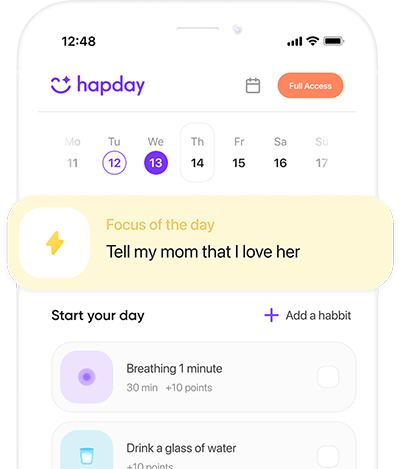Healthy boundaries are the cornerstone of strong, fulfilling relationships. They define where one person ends and another begins, ensuring that both individuals feel respected, valued, and safe. Without clear boundaries, relationships can become imbalanced, leading to resentment, misunderstandings, or a loss of individuality.
According to research published in the Journal of Counseling Psychology, individuals who establish clear boundaries in their relationships report greater emotional well-being, lower levels of stress, and higher relationship satisfaction. Yet, many people struggle with creating or maintaining boundaries, fearing conflict or rejection.
The good news is that building healthy boundaries is a skill anyone can learn. Whether it’s with a partner, friend, family member, or colleague, setting boundaries fosters trust, respect, and open communication. Here’s a deep dive into what boundaries are, why they matter, and practical strategies for establishing them in your relationships.
What Are Healthy Boundaries?
Healthy boundaries are limits you set to define what you are comfortable with and what you’re not. They protect your emotional, physical, and mental well-being while also fostering mutual respect in your relationships.
Types of Boundaries
- Physical Boundaries: Relating to personal space, touch, and physical needs.
- Example: “I prefer not to be hugged without asking first.”
- Emotional Boundaries: Protecting your feelings and emotional energy.
- Example: “I’m not ready to talk about this right now.”
- Time Boundaries: Managing how you spend your time and with whom.
- Example: “I need time for myself after work before making plans.”
- Material Boundaries: Setting limits around possessions or financial resources.
- Example: “I’m happy to lend my car, but please return it with a full tank.”
- Mental Boundaries: Respecting personal beliefs, thoughts, and opinions.
- Example: “I respect your opinion, but I see things differently.”
Establishing these boundaries allows you to feel safe and respected while giving others clarity about how to interact with you.
Why Are Boundaries Important?
Boundaries are essential for maintaining healthy, balanced relationships. Here’s why they matter:
1. Promote Mutual Respect
Clear boundaries communicate your needs and preferences, helping others understand how to respect you. This sets the tone for mutual respect in any relationship.
2. Prevent Burnout and Resentment
Without boundaries, it’s easy to overextend yourself or feel taken advantage of. Setting limits helps protect your time and energy, reducing the risk of burnout or resentment.
3. Encourage Healthy Communication
Boundaries create opportunities for open and honest communication. When both parties are clear about expectations, misunderstandings and conflicts are less likely to arise.
4. Enhance Emotional Well-Being
Research from the Journal of Personality and Social Psychology shows that people with clear boundaries experience 25% lower levels of anxiety and depression, as they feel more in control of their interactions and emotions.
Signs You Need to Set Boundaries
It can be challenging to recognize when your boundaries are being crossed, especially if you’re used to putting others’ needs before your own. Here are some signs it’s time to set clearer limits:
- You Feel Drained After Interactions: Spending time with certain people leaves you emotionally or physically exhausted.
- You Avoid Certain People or Situations: You’re hesitant to engage because it feels overwhelming or uncomfortable.
- You Experience Frequent Resentment: You often feel frustrated or taken advantage of.
- You Have Trouble Saying No: You agree to things out of guilt or fear of disappointing others.
- Your Needs Go Unmet: You prioritize others’ needs at the expense of your own.
If any of these resonate, setting boundaries can help you regain balance and prioritize your well-being.
How to Build Healthy Boundaries in Relationships
Setting boundaries takes self-awareness, courage, and consistency. Here are actionable steps to help you get started:
1. Reflect on Your Needs and Limits
Before you can set boundaries, you need to understand what you’re comfortable with and what feels unacceptable to you. Take time to reflect on your values, needs, and triggers.
How to Clarify Your Boundaries:
- Identify Pain Points: Think about past interactions that left you feeling upset or drained. What boundaries might have prevented those feelings?
- Consider Your Values: Reflect on what’s most important to you—whether it’s respect, autonomy, or balance—and align your boundaries with these values.
- Write Them Down: Putting your boundaries on paper can help you articulate them more clearly.
Example: If you often feel overwhelmed by last-minute plans, you might set a boundary to require advance notice before agreeing to commitments.
2. Communicate Clearly and Directly
Once you’ve identified your boundaries, it’s time to communicate them. Clear, direct communication ensures that others understand your needs without ambiguity.
Tips for Effective Communication:
- Use “I” Statements: Frame your boundary in terms of your own needs rather than criticizing the other person. For example, “I need time to recharge after work” is better than “You always overwhelm me.”
- Be Firm but Kind: Assertiveness doesn’t mean being aggressive. Express your boundary with confidence while remaining respectful.
- Keep It Simple: Avoid over-explaining or apologizing for your boundary. Simplicity reinforces its importance.
Example: If a friend frequently calls late at night, you might say, “I value our conversations, but I need to sleep earlier. Can we talk before 9 PM instead?”
3. Practice Saying No Without Guilt
For many people, saying no feels uncomfortable, but it’s a vital part of maintaining boundaries. Remember, saying no isn’t selfish—it’s an act of self-respect.
How to Say No Gracefully:
- Acknowledge the Request: Show appreciation for the person’s needs or feelings. For example, “I understand you’d like my help.”
- State Your Boundary Clearly: Politely but firmly explain your limits. For instance, “I can’t take on another project right now.”
- Offer an Alternative (If Appropriate): If possible, suggest a solution that works for both of you. For example, “I can’t help this weekend, but I’m available next week.”
Example: If a colleague asks you to stay late, you might say, “I appreciate that this is important, but I have personal obligations after work. Let’s plan a time to address this tomorrow.”
4. Be Consistent with Your Boundaries
Consistency is key to reinforcing your boundaries. If you make exceptions too often, others may not take your limits seriously.
Strategies for Staying Consistent:
- Follow Through: Stick to your boundaries even when it feels uncomfortable.
- Remind When Necessary: Politely remind others of your boundaries if they overstep.
- Avoid People-Pleasing: Remember that it’s okay if someone feels disappointed—it doesn’t mean you’ve done something wrong.
Example: If a family member repeatedly brings up a sensitive topic after you’ve set a boundary, calmly reiterate, “I’ve shared that this topic makes me uncomfortable, and I’d appreciate if we could focus on something else.”
5. Address Pushback with Confidence
Not everyone will respond positively to your boundaries, especially if they’re used to you accommodating them. It’s important to remain firm, even in the face of pushback.
How to Handle Resistance:
- Stay Calm: Resist the urge to get defensive. Repeat your boundary calmly and confidently.
- Acknowledge Their Feelings: Validate their emotions while standing by your limits. For example, “I understand this is frustrating, but this boundary is important for me.”
- Hold Your Ground: Remember that their reaction is about them, not you. Healthy relationships respect boundaries.
Example: If a friend insists on borrowing money despite your boundary, you might say, “I understand you’re in a tough spot, but I’m not comfortable lending money. I’m happy to help in another way.”
6. Seek Professional Support if Needed
If setting boundaries feels particularly challenging—especially in relationships with power dynamics or long histories—consider seeking support from a therapist or counselor. They can help you build confidence, address underlying fears, and practice effective communication.
The Benefits of Healthy Boundaries
Establishing and maintaining boundaries isn’t always easy, but the benefits are well worth the effort. When you set healthy boundaries, you:
- Strengthen Relationships: Clear boundaries foster trust, respect, and mutual understanding.
- Boost Self-Esteem: Standing up for your needs reinforces your sense of self-worth.
- Reduce Stress: Protecting your time and energy helps prevent overwhelm and burnout.
- Encourage Personal Growth: Boundaries create space for you to focus on your goals, values, and priorities.
Final Thoughts
Building healthy boundaries takes practice, but it’s one of the most empowering steps you can take for yourself and your relationships. Remember, boundaries aren’t barriers—they’re bridges that help connect you to others in a way that feels safe, respectful, and fulfilling.
Start small, be patient with yourself, and know that each step you take toward setting boundaries is an act of self-care and love. Over time, you’ll find that boundaries not only protect your well-being but also enhance the quality of your connections, creating relationships that truly allow you to thrive.
Improve your wellbeing with Hapday, Your Wellbeing Assistant
Join the millions of people using Hapday. Improve overall wellness & sleep.

Related Posts

Budowanie Zdrowych Granic w Relacjach

Building Healthy Boundaries in Relationships

Как установить здоровые границы в отношениях
Contact
Looking for a corporate solution? Contact us.
Ready to transform your life? Install now ↴
Join 1M+ people using Hapday's AI-powered tools for better mental health, habits, and happiness. 90% of users report positive changes in 2 weeks.

